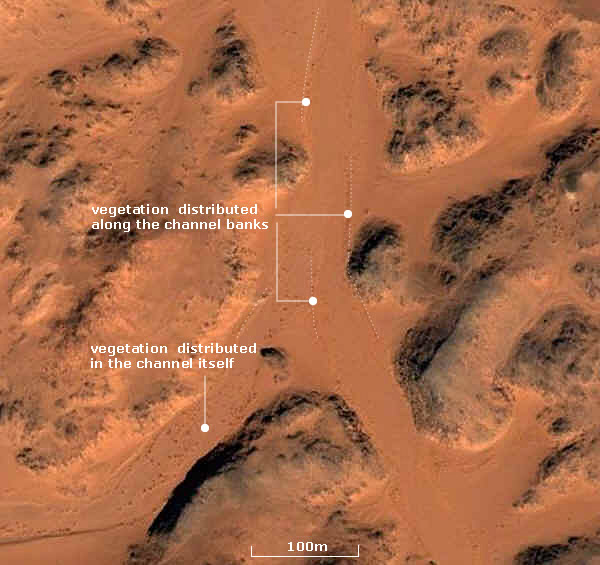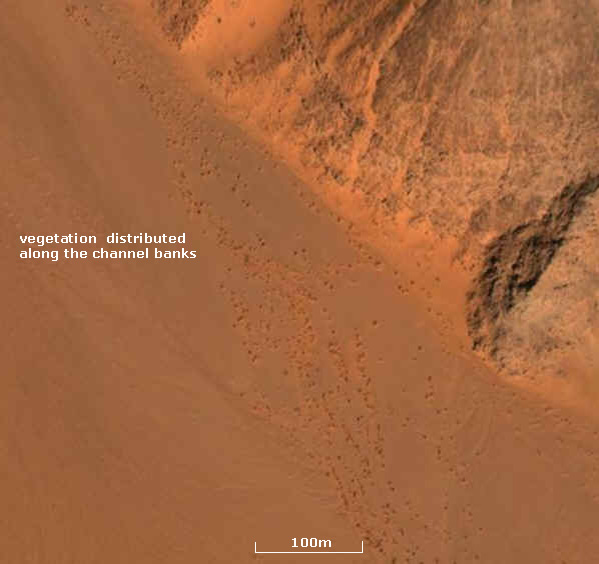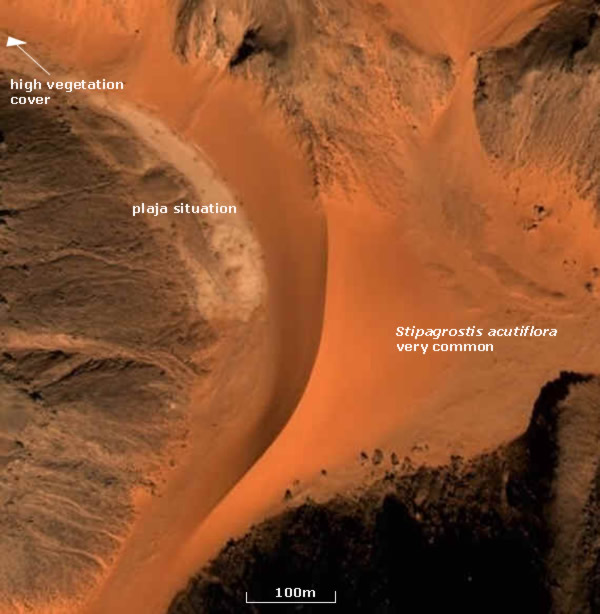|
|
| Beispiele
für Wüstentypen (Desert
Types of the Western Desert of Egypt): |
| |
| Erosion
valleys or wadis (Queds) with vegetation distribution in wadi
channels |
| |
|

|
 Abb. D2-20/01
(oben):
Abb. D2-20/01
(oben):
Location:
23°37'N / 26°14'E
23°37'19.40"N / 26°14'46.39"E
|
| Upper
part of Wadi Mashi with two lateral channels, or broad
runnels respectively. The vegetation is dominated by Fagonia
arabica (mainly dead), and Stipagrostis
acutiflora
(rare, mainly dead), building large phytogenetic hillocks.
|
| |
 |
 Abb.
D2-20/02
(oben):
Abb.
D2-20/02
(oben):
Location:
23° 8'N / 26° 2'E
23° 8'11.00"N / 26°
2'25.04"E |
|
Deep
and long lateral Wadi (not named) of Wadi El-Akhtar
with very large phytogenetic hillocks (like elephant head
dunes) of presumably Fagonia
arabica and Stipagrostis
acutiflora distributed
as a broad field along the main channel bank. The wadi itself
has a width of nearly 700m in this area. This wadi has not
been visited. This vegetation was found by evaluation of satellite
images.
|
| |
 |
 Abb.
D2-20/03
(oben):
Abb.
D2-20/03
(oben):
Location:
23°14'N / 26°13'E
23°14'8.71"N / 26°13'46.35"E
|
|
Wadi
El-Bakht: Transverse dunes are very common in the wadis
of the southern Gilf Kebir. Stipagrostis
acutiflora
grows very often on the shallow lower parts of stabilized
dunes, where this species can cover large areas. Generally,
Stipagrostis prefers Cambic Arenosols. Fagonia
arabica is dominating the wadi edge, channel banks,
and in smaller wadis central parts with Haplic Yermosols,
Eutric Regosols, but also Cambic Arenosols.
For
more information on Soil-Vegetation relationships in the Gilf
Kebir area, compare:
Alaily et al. (1987) "Ecological
investigations in the Gilf Kebir (SW-Egypt)" - Phytocoenologia
15(1): 1-20.
|
| |
|
|
| |
| |
| |